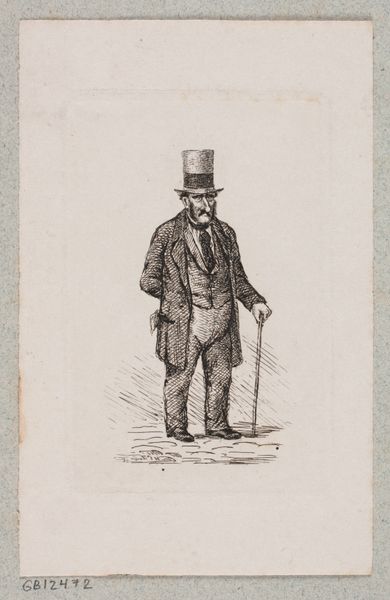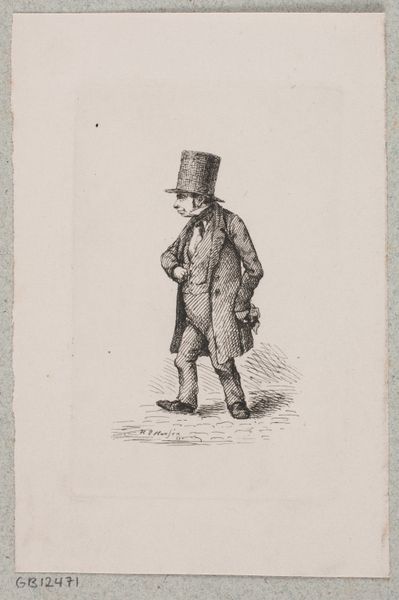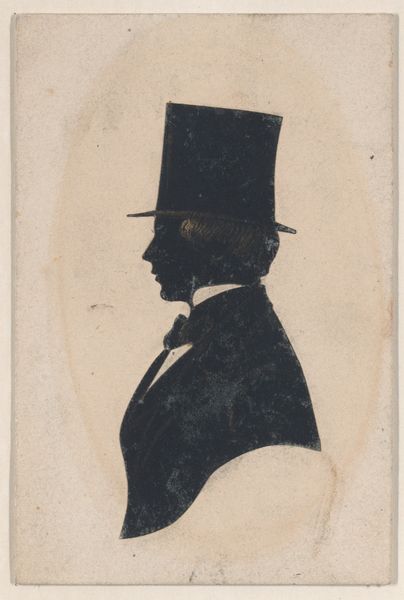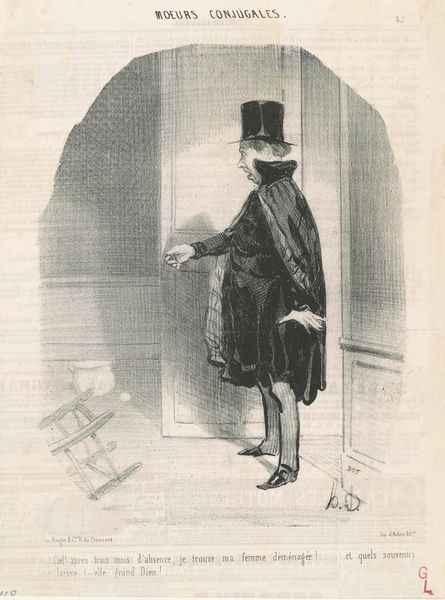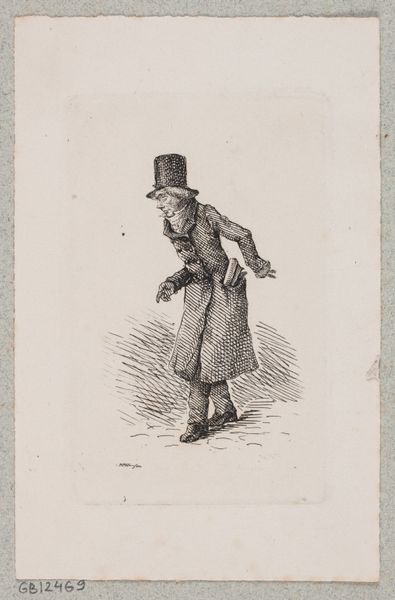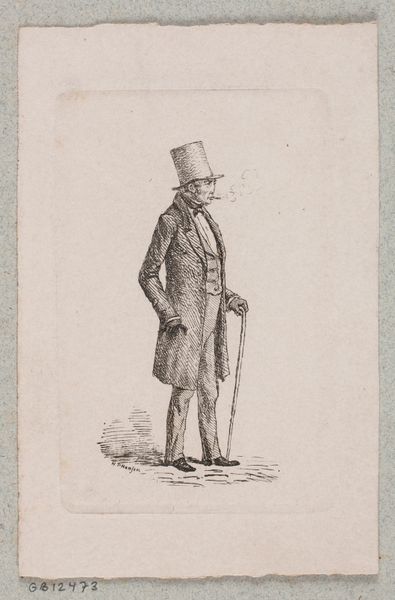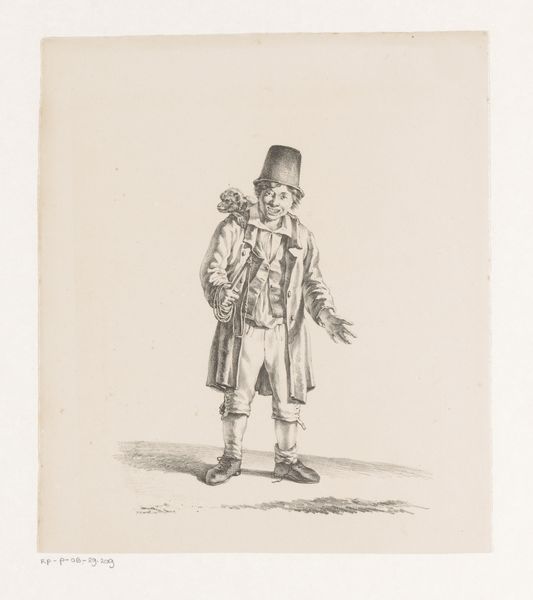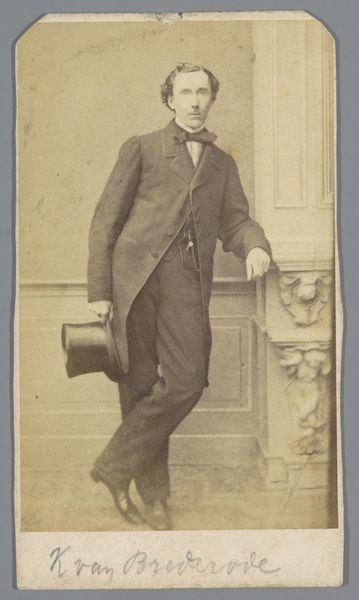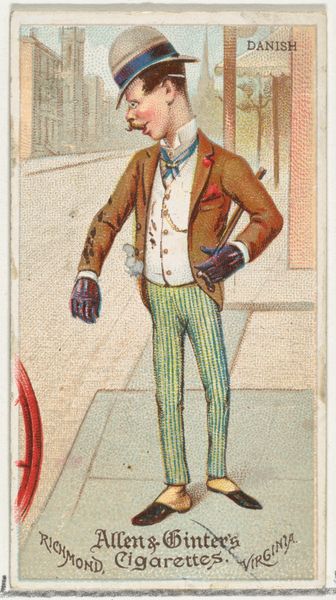
print, engraving
# print
#
genre-painting
#
engraving
#
realism
Dimensions: height 293 mm, width 197 mm
Copyright: Rijks Museum: Open Domain
Curator: Here we have a rather fascinating print entitled “Portret van J. Robert met rijtuig,” or "Portrait of J. Robert with Carriage," possibly from 1854, presently residing here at the Rijksmuseum. It is believed to be the work of Johann Peter Berghaus, created using engraving techniques. Editor: My initial response is one of stillness. The muted tones, the precise lines, and the subject's fixed gaze create a sense of quiet formality, almost a deliberate posed artificiality that feels far removed from genuine life. Curator: The composition certainly directs the eye, doesn’t it? The subject, J. Robert himself, is positioned in the foreground, taking up a significant portion of the picture plane, with the carriage and its passenger fading slightly into the background. Consider the subtle gradations in tone achieved through the engraving; observe how Berghaus manipulates light and shadow to define form, providing a level of textural detail throughout the picture, adding richness without relying on bright, sensational contrasts. Editor: While technically proficient, this representation of bourgeois life strikes me as complicit in the consolidation of social power during that period. Robert’s carefully constructed image and the carriage symbolize wealth and status. Consider the man behind the coachman -- their presence, so obscured, underscores the invisibility of labor. Curator: I can see your interpretation of those elements and agree; however, focusing purely on social dynamics overlooks other integral formal aspects such as line weight. See how the use of hatching creates gradients on J. Robert’s jacket, providing dimension to what otherwise would have been flat shape. And his book mirrors the carriage and wheels to offer a pleasant visual rhythm and a geometric connection between figure and environment. Editor: But can we truly divorce that "visual rhythm" from its real-world implications? That visual harmony papers over real societal tensions, a very effective means for enforcing cultural hegemony. It begs us to question how such seemingly neutral artistic choices work to uphold existing power structures and leave other identities out. Curator: Perhaps that’s too cynical a reading? Perhaps it’s simply documenting a man, his carriage, and his place in society at the time, viewed through the artistic trends of the time—an honest genre painting presented plainly, even realistically, in visual composition, shape, and texture. Editor: It is so much more complex than that. Understanding visual composition also necessitates questioning who has access to such a composition, who it leaves out, and what sociopolitical contexts enable or disable it in the first place. Curator: A sobering assessment that grants even greater depth and meaning to Berghaus’ print than I previously perceived, and definitely invites additional consideration and closer inspection of societal nuances of the 1850's. Editor: And hopefully, these reflections will allow us to engage more consciously and more equitably with visual cultures of the present.
Comments
No comments
Be the first to comment and join the conversation on the ultimate creative platform.
